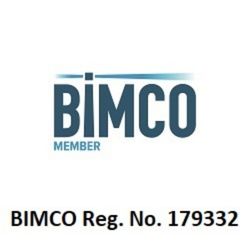Cavitation Damage Repair in Sattaship Port, Thailand - Ship Propeller Repair
We specialize in delivery fast and high quality Cavitation Damage Repair in Sattaship Port, Thailand. Trusted by ship managers, masters, and marine engineers worldwide. Whether you are docked at the port berth or anchorage, we ensure prompt delivery and professional service - keeping your vessel protected and ready to sail.
Cavitation damage repair involves restoring propeller surfaces eroded by bubble implosions, often through welding and polishing. Ship propeller repair addresses dents, cracks, and material loss to restore performance and efficiency. Both processes require precision to maintain hydrodynamic balance and prolong propeller lifespan.
Size: Typically customized to match propeller dimensions, ranging from small (under 1 meter) to large (over 5 meters).
Grade: High-performance epoxy or polymer-based compounds, often meeting MIL-SPEC or ASTM standards.
Viscosity: Low to medium (500–5,000 cP) for easy application and adhesion.
Buoyancy: Neutral to slightly negative to avoid affecting propeller balance.
Material: Epoxy resins, polyurethane, or metal-filled composites (e.g., aluminum, bronze).
Curing Time: 2–24 hours, depending on temperature and product formulation.
Hardness: 80–90 Shore D after curing for durability.
Adhesion Strength: >20 MPa to ensure bonding to propeller metals (e.g., nickel-aluminum bronze, stainless steel).
Operating Temperature: -30°C to +120°C for marine environments.
Corrosion Resistance: High, with saltwater and chemical resistance.
Application Method: Brush, spray, or trowel, often with surface prep (e.g., grit blasting).
Get connected to a wide network of trusted & verified ship service providers.
Submit your enquiry using our AI Form below to get multiple competitive quotes - on your budget, on your schedule.
Top Products for Ship Propeller Repair in Sattaship Port, Thailand
Shipfeeds - Your Trusted Partner in Sattaship Port, Thailand
- Local warehouse available in Sattaship Port
- Customs-cleared and port-approved supplies
- Multilingual support
- 24/7 Extended Support
Top


